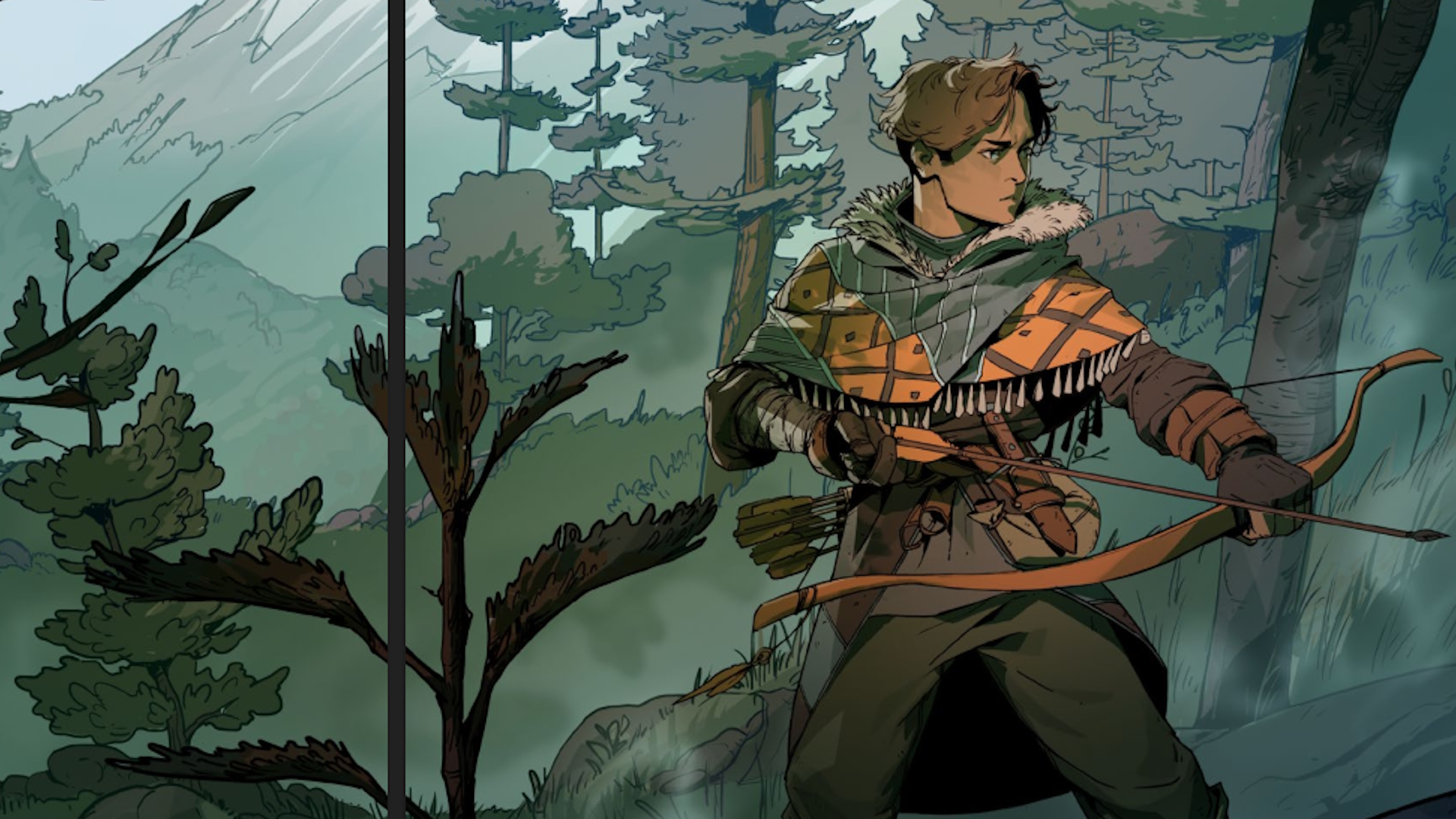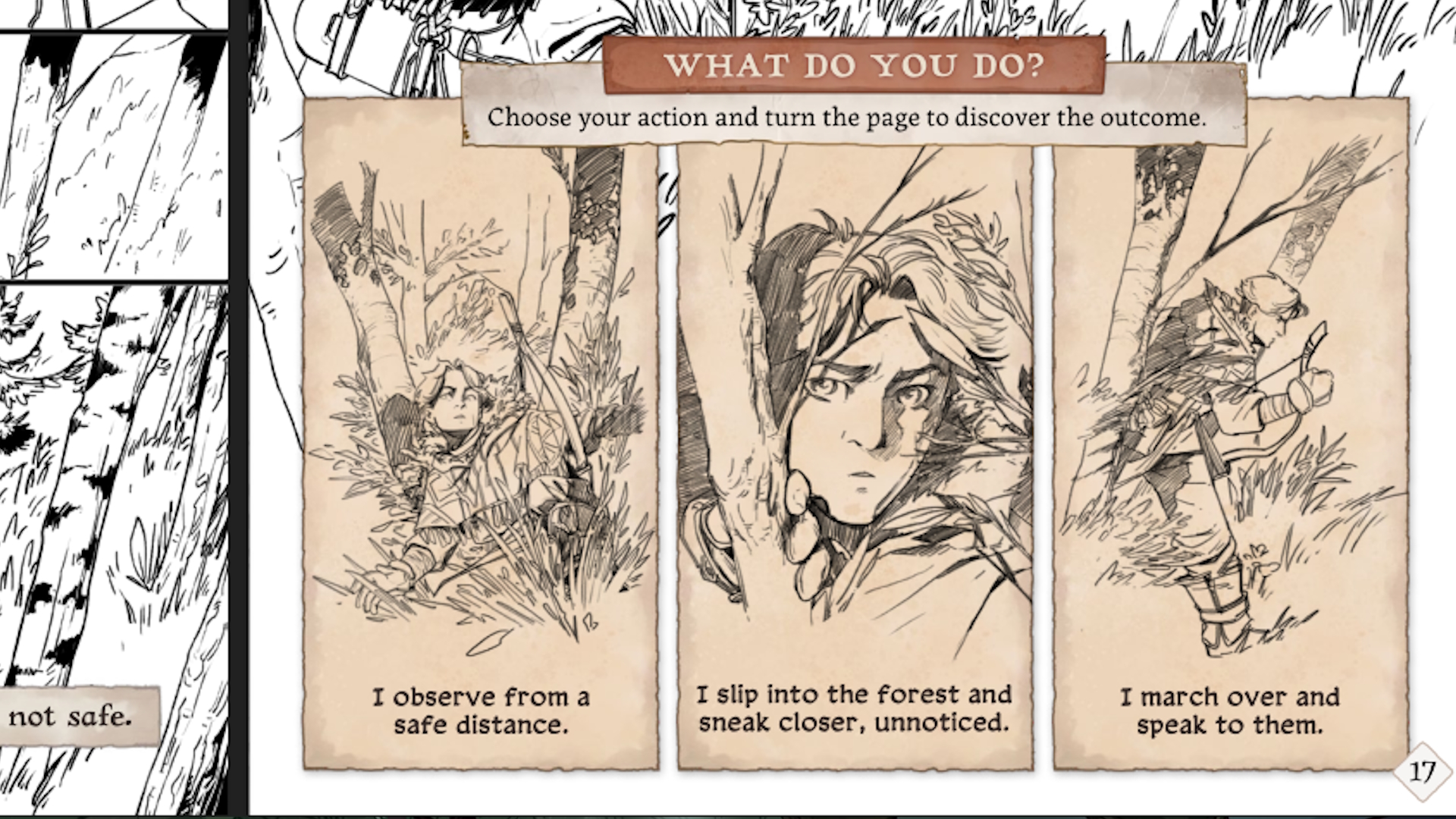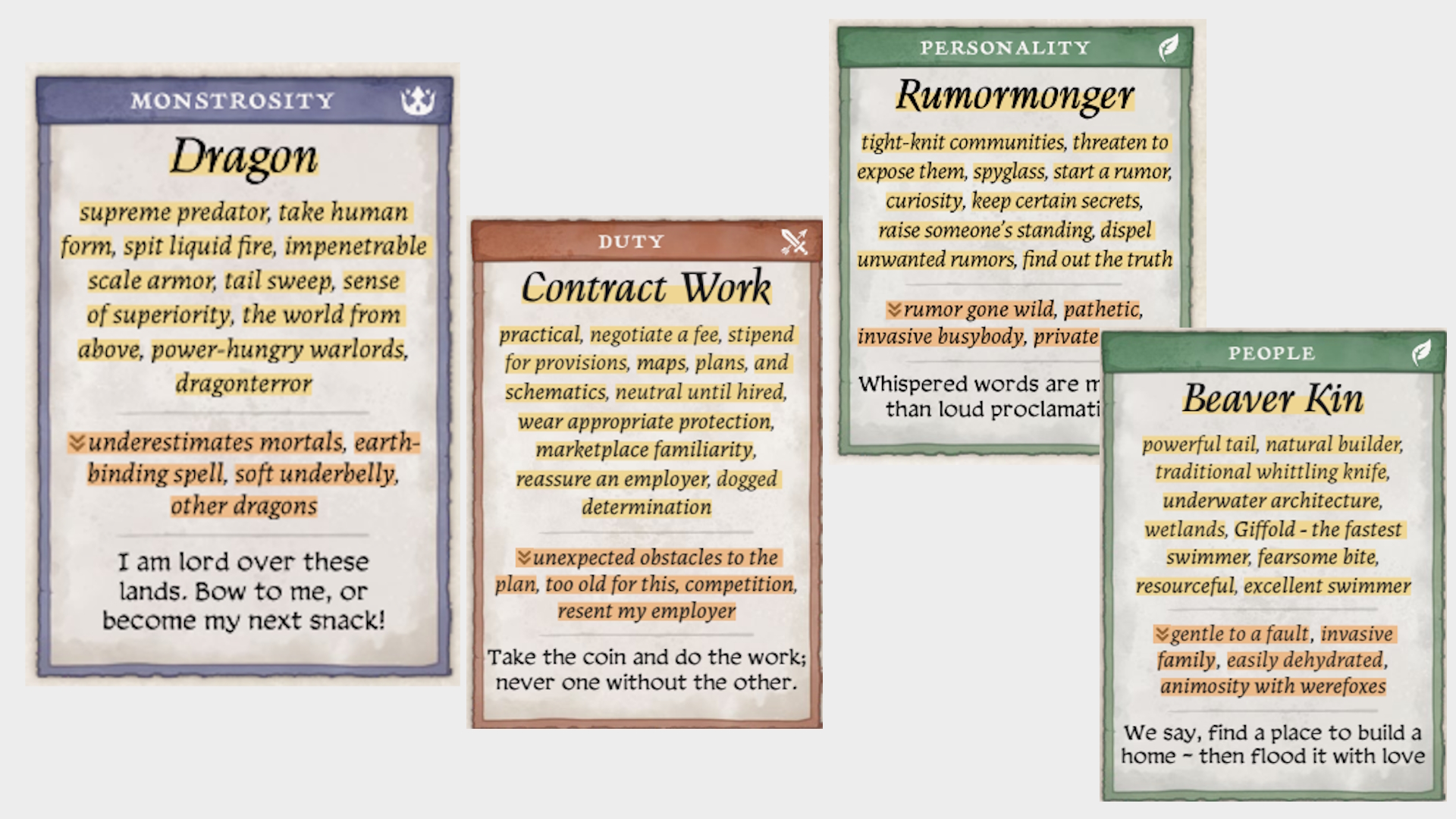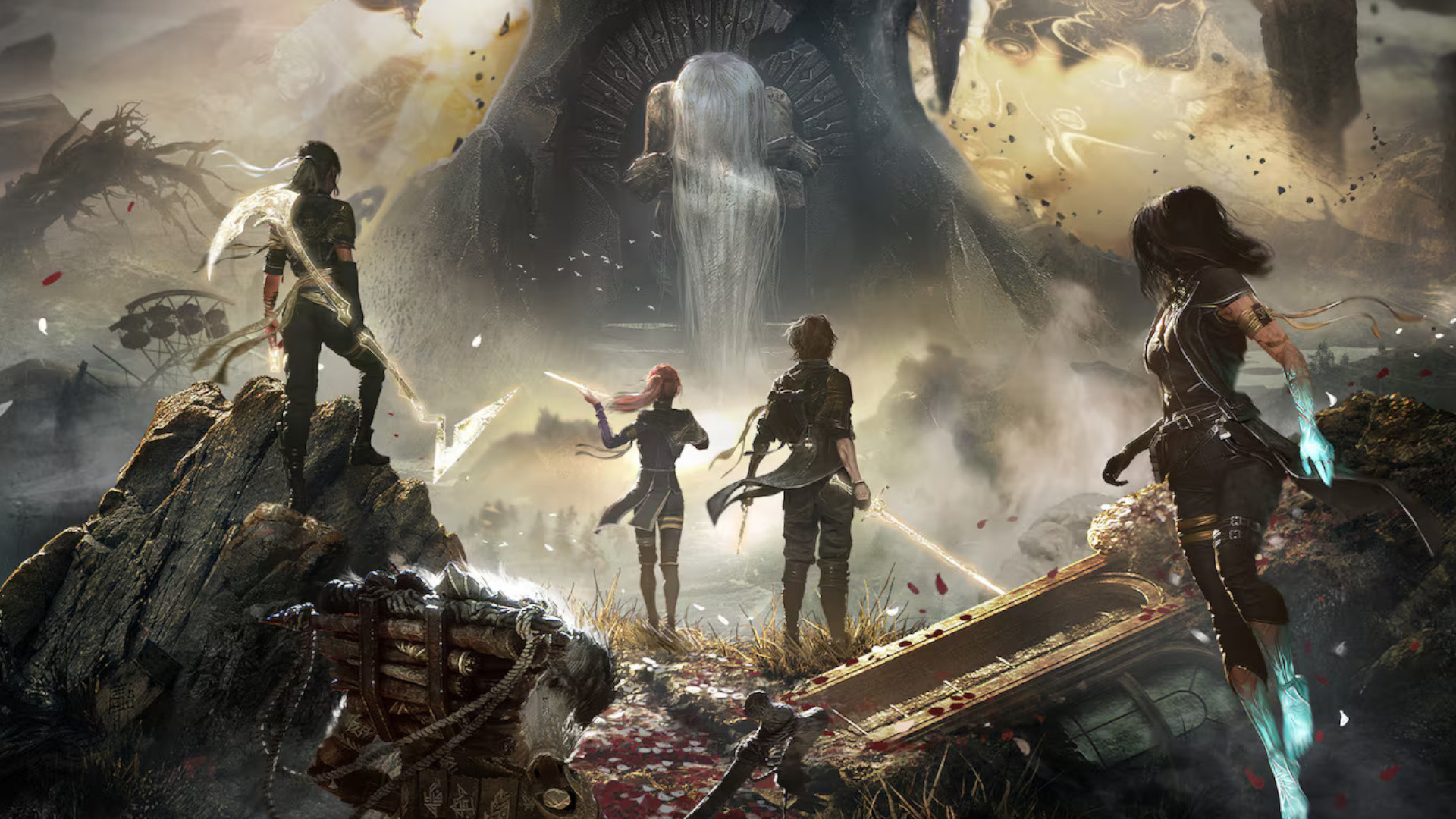D&D is "Great for sh*ts & giggles, but it's so saturated with magic that magic doesn't matter" says Legend in the Mist's lead designer
An interview with Amit Moshe, the mind behind the most anticipated TTRPG of 2025

Legend in the Mist is a tag-based tabletop RPG soon to release, with publisher Son of Oak having successfully funded the Kickstarter back in March last year. With 8,156 backers and $855,686 pledged, Legend in the Mist also went on to win the title of Most Anticipated TTRPG of 2025, beating popular titles like Dolmenwood, Modiphius' Discworld: Adventures in Ankh-Morpork RPG, and Free League's upcoming Evolved Edition of their award-winning Alien RPG.
So, seeking some insider knowledge on this super exciting rustic tabletop RPG, I've been chatting to Son Of Oak's CEO, lead designer, and creative director Amit Moshe, who speaks very frankly about the trials of the design process, and some of the ways they've learned from their players along the way.
Steering away from crunchiness
Having been surrounded in the tabletop space by "Super crunchy and mathy" games, Moshe decided to design the Mist Engine. They "Originally came up with the tags system after a while trying to create a system that would let me play the character I wanted every time, without cramming my creative ideas into preset abilities. I looked at games like FATE, but they felt too handwavy sometimes, and I felt players wanted more structure. Eventually the game that made it all click for me was Lady Blackbird". You may recognise this title as an indie tag-based game by John Harper, creator of one of the best tabletop RPGs around, Blades In The Dark.
For a little context, a tag-based system is one that, rather than relying on numbered stats, players instead utilize a list of tags to overcome obstacles. These can be both positive and negative, and are far more roleplay-centric than the likes of D&D's ability scores.
In Legend in the Mist, the Apple Picker's 'Scrappy' tag, for example, gives them a bonus when attempting to be charming but means they "Never Listen", so there's a lot of potential to bring characters to life with tags. It's a system that's used in all Son of Oak tabletop games, from Legend in the Mist's urban predecessor City of Mist, to cyberpunk fantasy :Otherscape, and even their anime superhero TRPG, QUEERZ! so it's easy to translate to a range of different settings.
"Since it's based on words, you can tell any story with it. It works best for games where players want to let different aspects of their characters shine, not just their limited combat abilities but also motivations, emotional state, and even catchphrases – all these things can have real gameplay effects. You can still have a very tactical game, if you wish, but it gains more depth," says Moshe.

When asked about whether it was difficult to balance a tag-based system, Moshe says "Yes and no. It definitely took some brain wrecking, but once we had it it was simple, and then it was a matter of communicating this to players."
Sign up to the GamesRadar+ Newsletter
Weekly digests, tales from the communities you love, and more
Moshe admits the system has changed a lot since their first game, City of Mist, in which players were limited to a singular Broad Tag. Legend In The Mist instead uses many tags, and while broader tags are more versatile they take time to prep. Design a more specific tags, and it will be far more reliable. "That solved the balance issues," says Moshe.
When it comes to weakness tags, there's something special about the game's mechanic of sacrificing one Power to gain Experience. "Interesting characters have flaws" says Moshe. "Growth comes from facing these flaws."
With a system so bent on helping people build interesting narratives and character arcs, players have taken the game in all kinds of interesting directions. "People create their own character creation theme books, and Challenges and even settings on the Garage", says Moshe. "My favorite is Wulin Rivals by Tony Pi and Colin Wilson which is a wuxia hack."
Interesting characters have flaws. Growth comes from facing these flaws.
Amit Moshe, Son of Oak CEO
"I get most excited when players invent new ways to use tags that I didn't think of, I guess that's called emergent gameplay," he notes. Emergence is something I've been writing about over on my own MythMash blog, and is a super fascinating topic on its own. Learning how players have adapted and reimagined your game is one of the most rewarding moments as a tabletop designer.
As Moshe recalls "I learned from players about status-offsetting tags, which are tags you have like Ignore the Pain that kick in only when you have negative conditions, and offset them by adding Power. It's brilliant."
Legend in the Mist's rustic setting
In designing Legend in the Mist, Son of Oak has moved away from the predecessor's urban aesthetic, opting for a more rustic setting. I wanted to understand why they made the choice to recede into the countryside, and what the term rustic really means to them as a concept.
Taking inspiration from popular games like the Witcher and its gritty, political and high magic setting with "Folkloric roots and rural particularities", Moshe notes that it's a case of deciding "What to publish that comes from what I find personally cool, with what I see in the zeitgeist." It's something you struggle with as a designer: balancing what your audience wants with the stories you love to tell.
Moshe admits, "I love stories like Princess Mononoke, where most characters have no magic but it's the most magical tale ever.
"Then you look at Honor Among Thieves, the D&D movie, which I think is great but it has that same problem D&D has - it's great for shits & giggles, but it's so saturated with magic that magic doesn't matter. Lord Of The Rings has ample magic, but the heroes don't wield it so much, and it always remains a mystery to them."

That was the sweet spot for Moche, a sense that magic really matters because it's rare. It's something that works well in making a game that's designed around a "Sense of nostalgia that comes with details to the natural world and [...] a sense of mystery, of revealing a world that is bigger than your character."
Supporting this is the game's Might mechanic. It's a way for players to split their aspects into Origin, Adventure, and Greatness, which "Allows you to create a party that is mostly wide-eyed villagers, while still having one extraordinary individual like Aragorn or Gandalf, and they all have specific things they can do better than one another."
Of course, that doesn't stop players from creating an entire party of characters that ooze Greatness, but suck at basic tasks like raking hay or folding socks.
When is Legend in the Mist going to drop?
Moshe and the rest of the Son of Oak team are confident they're on track for a spring release for Legend in the Mist - March is the projected time frame for digital copies. They note as an indie team anything can push the timeframe back, but they "Take extra care to protect [the] team and give everyone space to breathe and live, so there can be unexpected changes." Legend in the Mist is currently available on the City of Mist online store. Physical copies aren't expected to drop until the summer, but do keep an eye out on their Kickstarter updates page for more info.
For more recommendations, why not check out the best D&D books, or perhaps some lesser known solo RPGs.

Katie is a freelance writer with almost 5 years experience in covering everything from tabletop RPGs, to video games and tech. Besides earning a Game Art and Design degree up to Masters level, she is a designer of board games, board game workshop facilitator, and an avid TTRPG Games Master - not to mention a former Hardware Writer over at PC Gamer.


